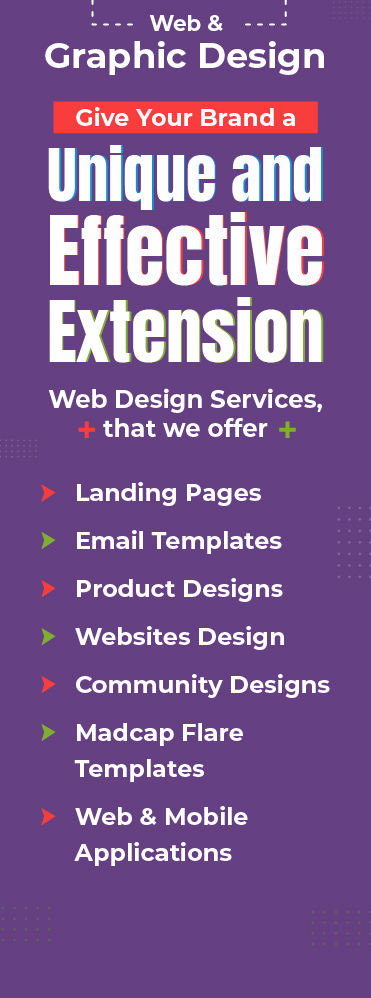“Design is not just what it looks like and feels like. Design is how it works.” – Steve Jobs
Graphic design is a pivotal force in digital marketing, transforming how content captures and maintains audience attention in the fast-paced digital world. With people swiftly scrolling through content, compelling visuals are essential for making an immediate impact.
Visually rich content attracts 94% more views than content without images[i]. On social media, posts with visuals can increase engagement by a staggering 650% compared to text-only posts[ii].
More than just aesthetics, graphic design is a powerful tool in digital marketing. It ensures your content stands out, boosts engagement, and builds strong connections between brands and audiences.
In this blog post, we will dive into the indispensable role of graphic design in digital marketing, discuss its key elements, and reveal what makes for exceptional graphic design.
Why Invest in Graphic Design
Investing in superior graphic design is pivotal for your digital marketing strategy’s success. Here are a few compelling reasons why investing in top-notch graphic design for your digital marketing efforts can make a significant impact:

Strengthened Brand Recognition
Consistent graphic design solidifies brand identity across multiple channels, including logos, websites, and social media. This consistency not only enhances the visual appeal but also reinforces brand values, evoking emotions and building trust. A strong visual brand identity increases customer familiarity, fostering loyalty and influencing their purchasing journey from browsing to buying.
Improved User Experience
Good graphic design improves user experience by creating visually appealing, easy-to-navigate, and cohesive interfaces. Using color, typography, and layout effectively engages users, simplifies content understanding, and encourages interaction.
Better Off-Site Engagement
The exceptional graphic design captures attention beyond your website, especially in social media posts, ads, and blog visuals. Well-designed content stands out, driving more clicks, shares, and overall engagement, leading people back to your brand.
Improved Sales
Effective graphic design elevates a business’s visibility and credibility, leading to higher sales. According to Adobe’s State of Create report, 59% of customers prefer products or services with good design over those of competitors[iii]. A well-designed presentation not only draws attention but also enhances the perceived value of your brand.
Competitive Advantage
In digital marketing, focusing on design helps businesses stand out. Particularly for luxury brands, customers value quality and exclusivity, making the visual presentation a key factor in their decision-making process.
What are the Key Elements of Design?
Graphic design is composed of fundamental elements that collectively create impactful visuals. Here’s a breakdown of these components:

1. Texture
Texture in design gives the illusion of depth and dimension. It adds a tactile aspect to graphics, enhancing engagement. For instance, smooth product images or textured backgrounds can make visuals more appealing and dynamic.
2. Lines
Lines are subtle yet powerful in guiding the viewer’s eye and shaping the design’s structure. They can vary from sharp and angular for precision, to flowing and curved for creativity, playing a vital role in how a design communicates visually.
3. Shape
Shapes are basic elements in design, especially significant in B2B digital marketing for brand recognition. Geometric shapes suggest professionalism, while organic shapes can symbolize innovation and creativity. The integration of shapes affects how the audience perceives and reacts to the design.
4. Space
The concept of space in design refers to the area around shapes or forms. Negative space, or white space, is the unmarked area, while positive space is the area within shapes. The balance of positive and negative space is key in focusing attention on important elements of the design.
5. Color
Far more than just aesthetics, color influences emotions and perceptions. In B2B marketing, colors can establish brand identity, evoke emotions, and convey professionalism. For example, blue can symbolize trust, green growth, and red urgency.
Neutral tones like gray suggest sophistication, while accent colors add vibrancy. The choice of colors significantly impacts how a B2B audience perceives a brand’s credibility and message.
Graphic Design Innovations in B2B Marketing Strategies
Let’s examine how industry leaders have used exceptional graphic design to revolutionize visual storytelling in business:
- Salesforce – Streamlined and User-Friendly Interface: Salesforce demonstrates excellence in B2B-focused design with its clean and intuitive dashboard. This design aids B2B professionals in effortlessly navigating complex data, with a clear visual organization and a limited color palette that emphasizes professionalism and focus.
- IBM – Minimalist and Functional Design: IBM, a major player in the B2B tech industry, showcases minimalist design in its product presentations and technical documentation. The use of sleek layouts, straightforward typography, and clear imagery aligns with IBM’s reputation for innovation and reliability in the B2B space, making complex technical information accessible and engaging.
- Adobe – Consistent B2B Branding Across Platforms: Adobe excels in presenting a unified brand identity in its B2B marketing efforts. From its software interfaces to digital marketing tools, Adobe maintains consistent visual elements. This uniform branding approach strengthens its image as a credible and professional solution provider, resonating with a B2B audience that values consistency and reliability.
Wrapping Up
Graphic design is a critical element in digital marketing, far beyond mere aesthetics. It effectively represents brands, evoking emotions and facilitating seamless user experiences. Each aspect of design, from color choice to layout, is key in connecting businesses with their audiences.
Consistent visual storytelling fosters trust and turns casual viewers into loyal customers. As the digital world evolves, the importance of utilizing design to engage, inspire, and build lasting relationships remains paramount.
Transform Your Brand’s Digital Landscape With Design That Resonates! Contact Us!
Our experts can help you craft a visual identity that speaks volumes, captivates your audience, and drives you toward your business objectives.
Should you have any questions, reach out to us at [email protected], and we’ll take it from there.
Statistics References:
[i] Lean Labs
[ii] Movable Ink
[iii] Adobe












